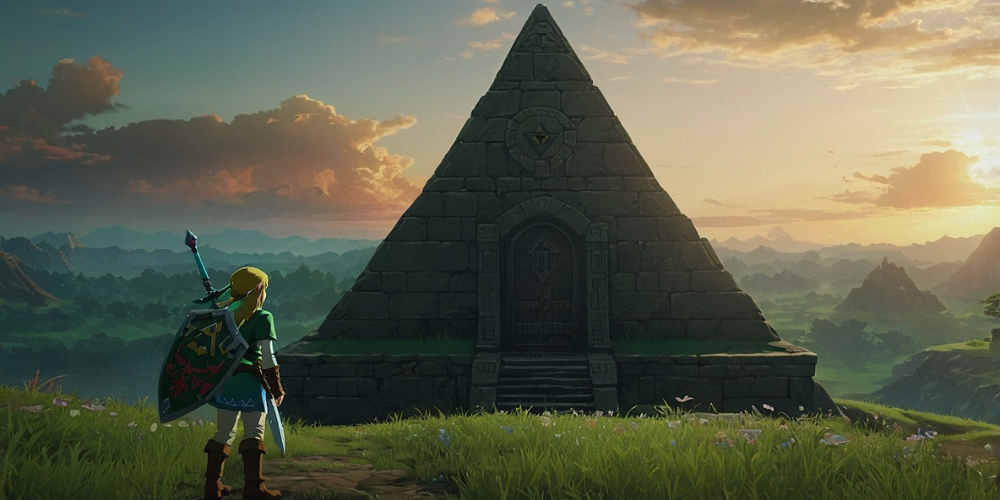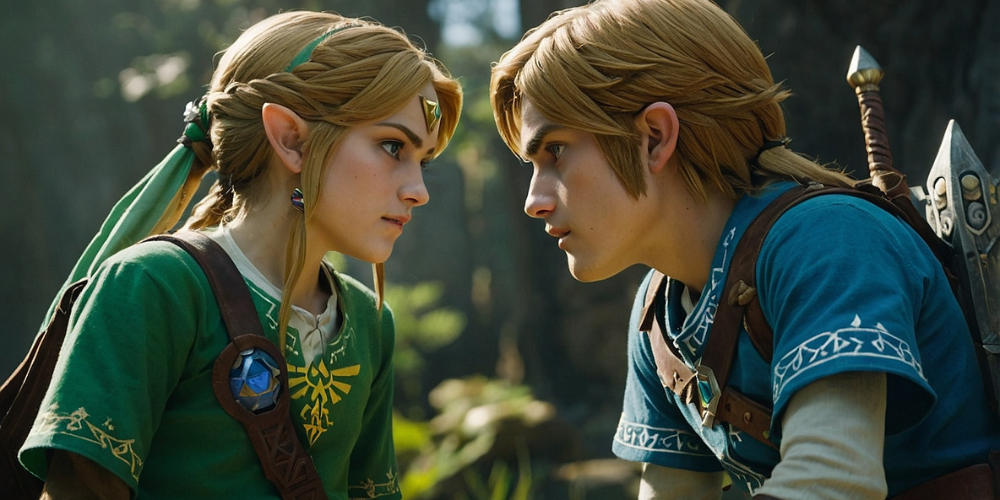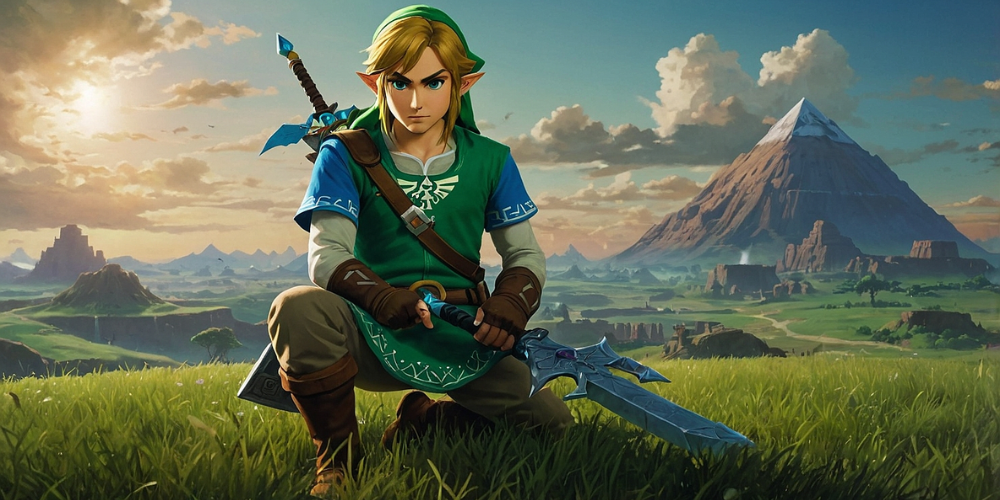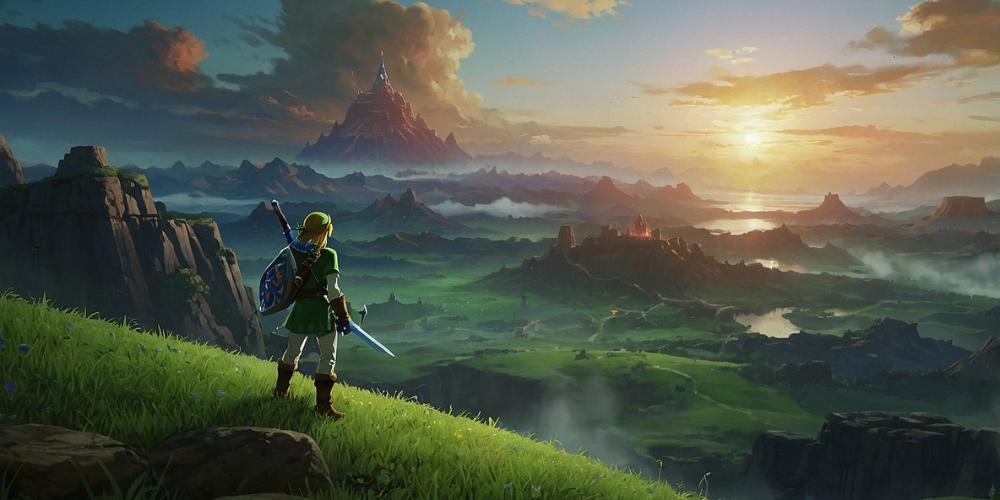Navigating the Evolution of Open-World Exploration in The Legend of Zelda Series
Nov-01-2024

The Legend of Zelda series has been my gateway to immersive worlds filled with adventure, puzzles, and rich narratives. As I reflect on the evolution of open-world exploration throughout the franchise, I can't help but trace my own journey through its iconic landscapes. Each installment not only expanded the boundaries of the world I could traverse but also shaped my experience of what it means to be a hero.
The Beginning: Introducing Freedom in Zelda
My introduction to the world of Hyrule began with the original Legend of Zelda. Released in 1986, it was revolutionary for its time, marrying exploration with a quest structure that encouraged me to wander rather than follow a linear path. The game launched me into a vibrant 2D landscape where secrets were hidden behind every bush and rock. I vividly remember the thrill of stumbling into dungeons mere steps from where I had just embarked on my journey.
Expanding Horizons: Link to the Past
When I first played The Legend of Zelda: A Link to the Past, I was captivated by the expansive map that divided into two realms. The contrast between the Light World and the Dark World seized my imagination. The interconnectedness of the worlds, along with the newfound narrative depth, made my exploration feel purposeful. Each item I collected opened more areas to uncover, drawing me deeper into its story.

3D Transformation: Ocarina of Time Takes Center Stage
The jump to 3D with The Legend of Zelda: Ocarina of Time was nothing short of breathtaking. As I moved through the landscape of Hyrule in a fully realized 3D world, I felt a new level of immersion. The vast fields, rolling hills, and intricate dungeons expanded my sense of navigation. It was a mix of nostalgia and excitement; I was no longer just playing a character but stepping into the shoes of Link in a sprawling land that breathed along with me.
The Winds of Change: Sailing in Wind Waker
Transitioning to The Legend of Zelda: The Wind Waker, I found myself sailing across vast oceans rather than just traversing a landlocked world. The cel-shaded graphics and the beautiful seascapes were enchanting. While I missed the intricate land exploration, I discovered that the ocean was teeming with islands to discover, each with its unique challenges. The feeling of setting my sail towards the horizon, not knowing what treasures awaited, was exhilarating.
Connecting the Past with New Paths: Twilight Princess
With The Legend of Zelda: Twilight Princess, I experienced a return to a more rugged, adult aesthetic. The expansive lands felt both familiar and novel as I navigated through Forts, villages, and shadow-infested zones. The introduction of the wolf form added another layer of exploration, allowing for varied gameplay mechanics that kept me engaged. Looking back at my time in Hyrule, it’s clear how each new installment built upon past experiences while also planting the seeds for further innovation.

Exploring Old Stories: Skyward Sword
Although The Legend of Zelda: Skyward Sword shifted the focus to a more segmented approach with its floating islands and linear quests, it expanded my understanding of narrative and lore. The verticality of exploration forced me to think creatively about how to navigate my environment, marking a unique chapter in my Zelda experience. I still cherish the sense of wonder I felt while soaring through skies and uncovering ancient mysteries.
A New Era: Breath of the Wild Redefines Open-World Exploration
As I delved into The Legend of Zelda: Breath of the Wild, I was instantly struck by how deeply the developers embraced the concept of open-world exploration. The sheer scale of the map felt liberating; every mountain I saw in the distance was a promise of adventure. I learned to approach problems from various angles, often finding multiple solutions to challenges, which made every playthrough uniquely my own. It felt like a true adventure, defined by my choices.
Environmental Storytelling: A Deeper Connection
Emphasizing the relationship with the environment, Breath of the Wild allowed me to forge my path through the world. The meticulously designed landscapes were filled with hints of history and culture, weaving a narrative that unfolded naturally as I explored. I felt connected to the land as I uncovered Korok seeds and filled my inventory with resources. Each discovery deepened my understanding of the world’s lore and enriched my exploration.
The Role of Mechanics: Crafting My Journey
Mechanically, the introduction of cooking and crafting systems added an interactive dimension I had never experienced in previous titles. The choices I made regarding food and equipment created a personal touch, making my journey feel all the more significant. I was no longer just a passive observer; I was an active participant crafting my adventure and learning from the environment.
Revisiting Nostalgia: The Return to Classic Elements
With the reimagining of older titles in The Legend of Zelda: Link's Awakening, I felt a wave of nostalgia wash over me. The evolution of graphics and game mechanics mirrored advances in technology while still retaining the charm of the original game. Exploring Koholint Island allowed me to see how far the series had come while still holding onto the elements that first captured my imagination: secrets, spontaneity, and adventure.

Community and Connection: Multiplayer Elements in Upcoming Titles
As I look towards future installments, I am excited about the potential for community interaction. There is a growing emphasis on multiplayer elements in gaming, and I am curious to see how the Legend of Zelda will adapt to accommodate players venturing into Hyrule together. Will it change the way I navigate the exploration? The thought of shared quests and encounters tantalizes me.
Adaptation to Technology: Accessibility in Exploration
Advances in technology have redefined how I experience open-world exploration. With features like fast travel and dynamic environments, games are evolving to adapt to the needs of players. I find it fascinating to see how the series balances new technological capabilities with the heart of exploration—a reminder that while the mechanics may change, the essence remains the same.
Environmental Interaction: A Deeper Immersion
Future titles in the Zelda series are poised to capitalize on the strengths of environmental interaction. I ponder how the intricate systems could further enhance my immersion. The ability to manipulate the world around me in ever more dynamic ways could redefine my understanding of exploration and engagement within Hyrule.
Expanding Lore and Mythology: Continuous Storytelling
As I think about the progression of the series, I see a continuous thread of storytelling woven through various timelines and characters. Each title, while often introducing new gameplay mechanics, also builds upon the rich mythology that has captivated players for decades. My exploration of Hyrule has always felt like a journey through an epic saga that adds depth to each experience.
The Future: Infinite Possibilities Awaits
The Legend of Zelda franchise continues to set the stage for groundbreaking exploration. As I anticipate future releases, I feel a sense of excitement about the direction of open-world exploration in gaming. With each installment, I have the opportunity to craft my story, navigate rich narratives, and engage in worlds that continue to evolve. Whether it’s grounded in familiar landscapes or reaching into uncharted territories, my adventures as Link are far from over.







